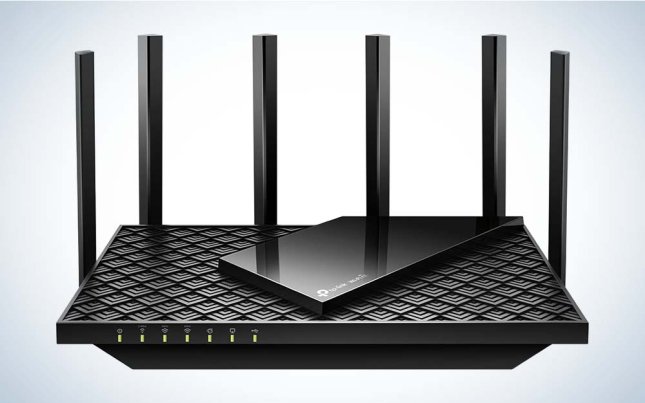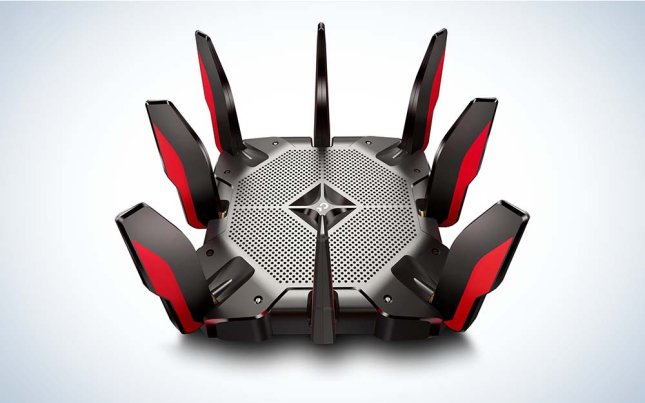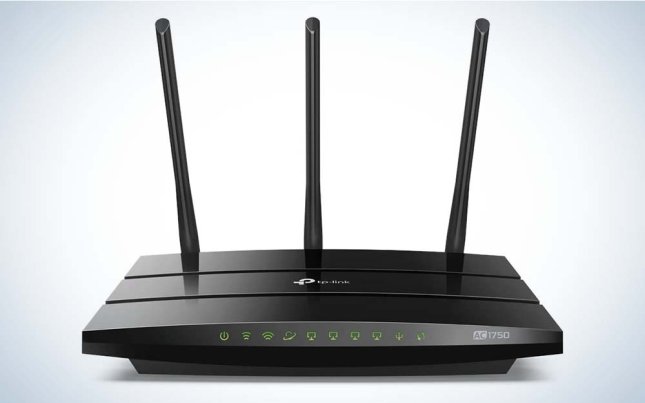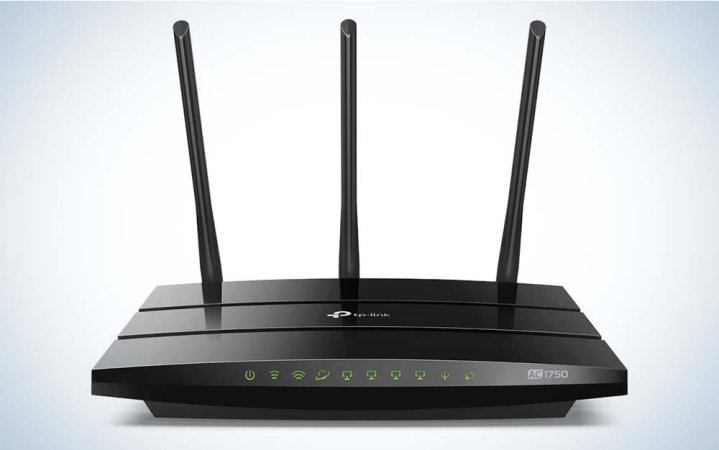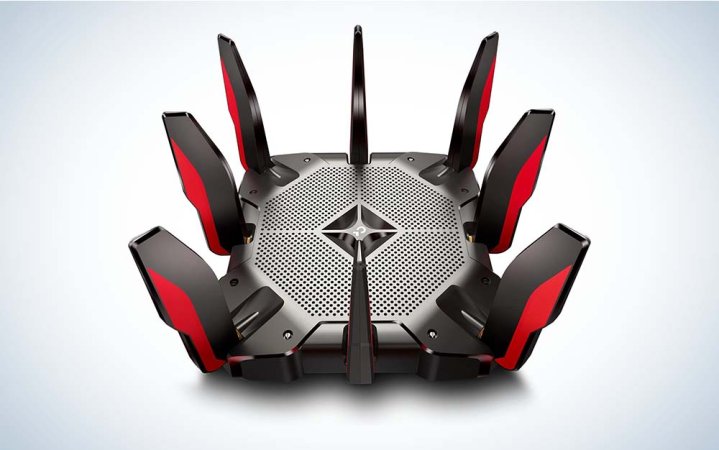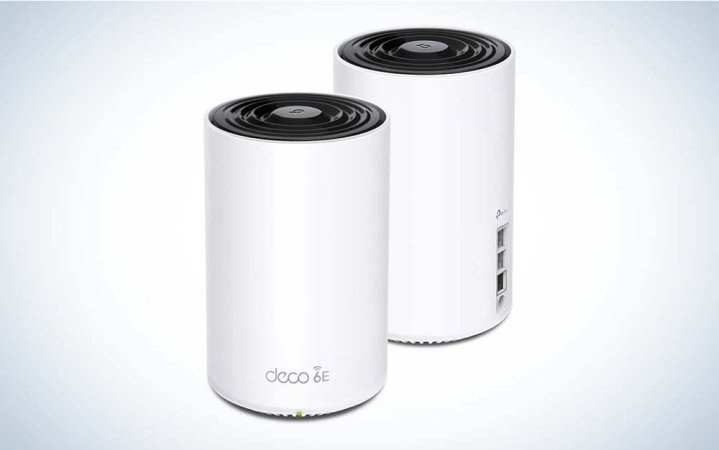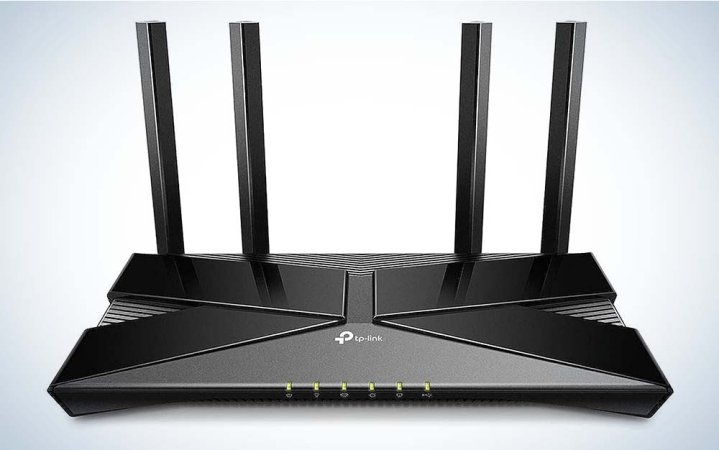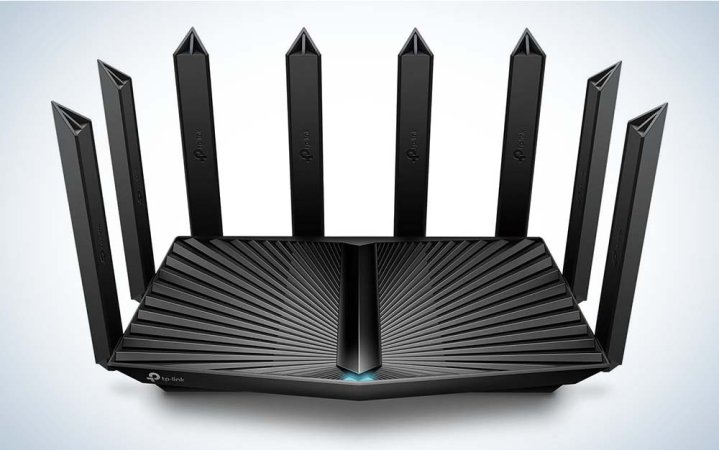We may earn revenue from the products available on this page and participate in affiliate programs. Learn more ›
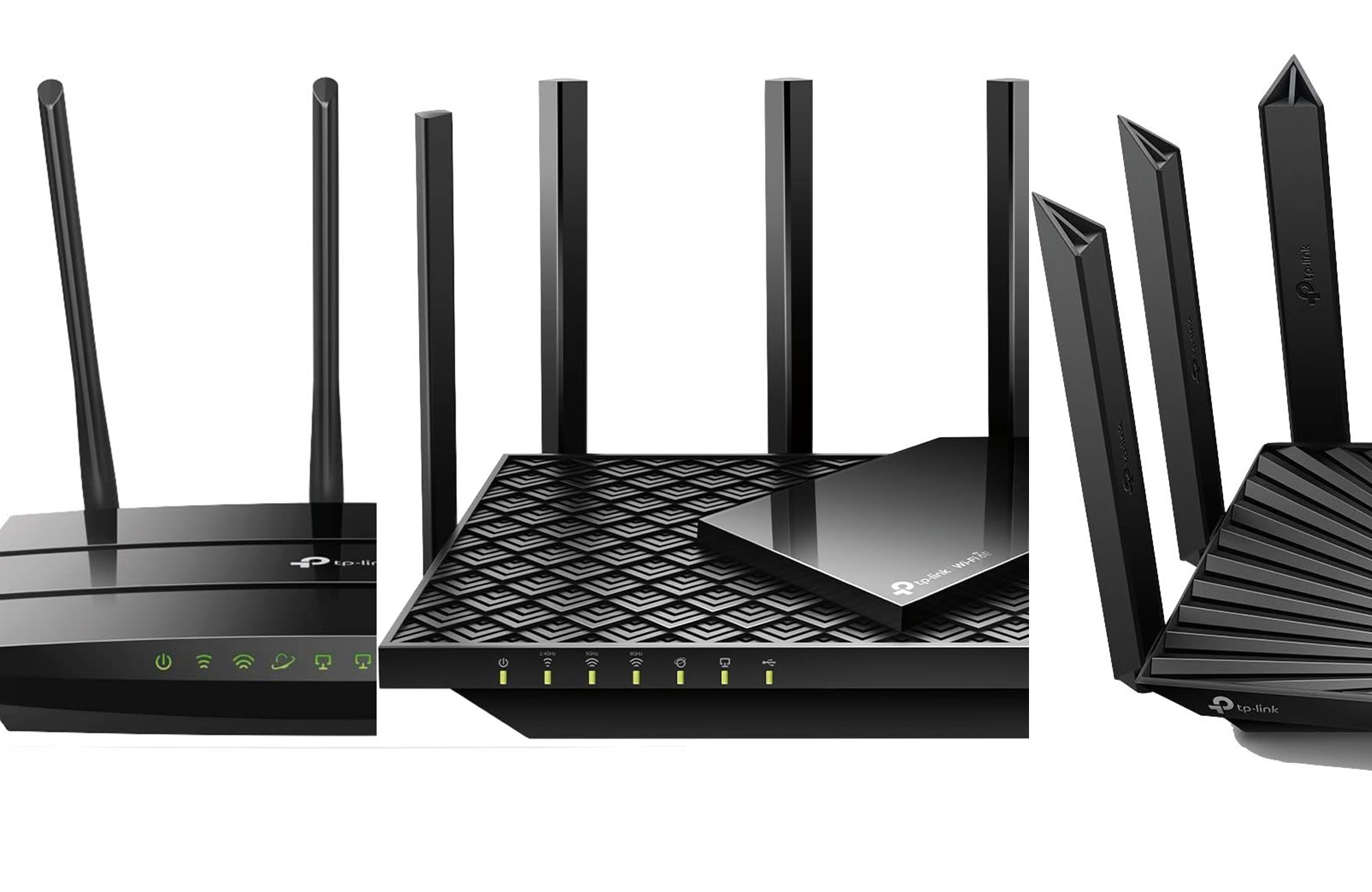
Many people take their internet connectivity for granted. Once they overcome the struggle of reconciling our true lack of choice when it comes to choosing an ISP, consumers often settle for whatever router is left at their house by the service tech. These standard, come-with-the-service routers are akin to a basket of bread at a restaurant. They might fill a need for a while, but eventually, you will need to really eat. That’s where brands like TP-Link come in. It produces dinner routers that intensify your connections, build reliable home networks, and offer robust built-in management features that can turn your WiFi into WHOA-Fi. Horrible puns aside, buying a new router is sometimes a daunting process. Deciding what features matter to you, along with technical specs that align with your internet service plan, requires a bit of research. Thankfully, we’ve done the research for you in compiling this list of the best TP-Link routers.
- Best overall: TP-Link Archer AXE75 AXE5400
- Best budget: TP-Link Archer A7 AC1750
- Best for gaming: TP-Link Archer GX90 Gaming Router AX10000
- Best mesh system: TP-Link Deco XE75 Pro AXE5400
- Best for home office: TP-Link Archer AX10 AX1500
- Best for high-speed connectivity: TP-Link Archer AX90 AX6600
How we chose the best TP-Link routers
TP-Link offers a wide range of routers built to match every need. From budget routers to more expensive gaming routers and mesh systems, TP-Link builds a router that will work for you. When choosing which products to highlight from a single manufacturer, the trick is to imagine as many scenarios as possible (within editorial constraints) and offer those routers as menu items. After that, it’s off to scour customer reviews, competitive pricing, and other factors to narrow down the list for each category. In the case of some, such as mesh systems, the options are limited. Others, it’s a matter of deciding which router meets which category. What we end up with is the best-reviewed TP-Link routers out there, organized in a list to meet your hunger for truly powerful WiFi connections.
The best TP-Link routers: Reviews & Recommendations
Overall, TP-Link routers are reliable WiFi 5 and WiFi 6 routers that meet most home internet security needs. Some offer dual-band, while some are tri-band (more on that in the FAQs). Some support mesh systems without being one themselves, and some (well, one) are solely intended for the reliable high speeds required for gaming. And others are just well-rounded routers that will cover most needs, while a few are sub-$100 budget buys that easily support most basic requirements. Any WiFi router on this list will certainly be a delicious upgrade to the stale dinner roll provided by your ISP.
Best overall: TP-Link Archer AXE75 AXE5400
best overall
TP-Link Archer AXE75 AXE5400
Pros
- Fast connection
- Tri-band avoids roadblocks
- Basic parental controls
Cons
- Full parental controls require a subscription
- No multi-gig Ethernet
Why it made the cut: This is a well-rounded router built to handle the entire family streaming at once.
Specs
- Band: Tri-band
- WiFi Version: 6
- Mesh Support: Yes
- Top Speed: 2402Mbps
The TP-Link Archer AXE75 AXE5400 takes advantage of the recent changes to WiFi protocols that allow for a 6GHz band alongside the traditional 5GHz and 2.4GHz bands. This means more opportunities for seamless connectivity when you’re fighting with your apartment complex neighbors for a stable connection. Less congestion on the highway, as the old adage goes. It advertises up to 5400 Mbps speed, but that’s just combining the 2402 Mbps speed offered by the 5GHz and 6GHz bands. The 2.4GHz offers 574 Mbps, which still isn’t too shabby.
And no matter the advertised speed of a router, your true speed is determined by your connected device. Like, there’s no way your old Xbox 360 is getting 2402 Mbps, or even 574 Mbps. But if you connect it to one of the four Gigabit Ethernet ports, you might.
You can monitor your entire network through the TP-Link Tether app. (A quick note: connecting to your router through a web browser is more effective than the app on your phone.) This offers more options, including the advanced menu and VPN settings. You can also monitor the included HomeShield parental controls package, which can be upgraded with a subscription. The basic package has profiles, content filtering, and scheduling (the last bit is usually not included in free parental control software). Overall, the TP-Link Archer AXE75 AXE5400 has more than enough speed and features to make it one of the best choices for a home router if you don’t have one urgent, specific need for a more specialized router.
Best budget: TP-Link Archer A7 AC1750
Best budget
TP-Link Archer A7 AC1750
Pros
- Super affordable
- Amazon Alexa support
- Multiple Gigabit Ethernet ports
Cons
- Short on advanced options
- Half the speed of high-end devices
Why it made the cut: You sometimes don’t need anything more than a router that connects you to the internet and doesn’t cost an entire car payment.
Specs
- Band: Dual-band
- WiFi Version: 5
- Mesh Support: Yes
- Top Speed: 1300 Mbps
When all you need is a stable connection to the internet without the complication of multiple people trying to hog the bandwidth, the TP-Link Archer A7 AC1750 is your best option. This sub-$100 router offers the basics of WiFi 5, including 450 Mbps on 2.4GHz and 1300 Mbps on the 5GHz band. It has four antennas instead of six or eight, which is fine because you don’t have a gaggle of children in different corners of the house constantly consuming all the internet content ever. So yeah, if you do have a house party, there might be some slowdown.
The good news is that if your household does expand, there is mesh network support. You can add a TP-Link OneMesh WiFi extender or mesh system and instantly expand your network. It works with Alexa and supports USB 2.0 for local file storage. Security options include access control to blacklist your neighbor who keeps trying to hop on your WiFi and one-touch WPA wireless security encryption. This is the router you purchase for your aging parents (and set up for them) when the antiquated router provided by the ISP just isn’t cutting it. The TP-Link Archer A7 AC1750 just works, and sometimes that’s all you need.
Best for gaming: TP-Link Archer GX90 Gaming Router AX10000
Best for gaming
TP-Link Archer GX90 Gaming Router AX10000
Pros
- Combined 10 Gbps speed
- Free HomeCare subscription
- No lag
- Game accelerator
Cons
- Can’t adjust antennas
- Looks like a melted down gamer chair
Why it made the cut: A gaming router should have top-of-the-line options, and this one has that in spades.
Specs
- Band: Tri-Band
- WiFi Version: 6
- Mesh Support: Yes
- Top Speed: 4804 Mbps
The TP-Link Archer GX90 Gaming Router AX10000 is the big honking chunk of beef you need on your router shelf if your life is spent gaming, streaming, and having LAN parties with the bros. It’s a tri-band WiFi 6 router, which means you get two 5GHz bands pushing a whopping 4804 Mbps each and 918 Mbps on the 2.4GHz band. Throw in eight Gigabit LAN ports, two USB 3.0 ports (Type A and Type C), and you’ve got yourself a gaming throwdown—whether you’re a PlayStation 5 or gaming PC type. This is all handled by a 1.8GHz Quad-Core CPU and three coprocessors. And it’s not that expensive either, coming in well under some of the purported top-of-the-line routers.
Support options include TP-Link HomeCare, which features antivirus protection and parental controls. It also works with compatible TP-Link mesh systems, which can help blanket your house in WiFi. A cozy, always-connected blanket that delivers the highest speeds that your devices can handle. The built-in gaming optimization software reduces lag time and keeps pings low, so your gaming is generally consistent and smooth. And the second 5GHz band is marked as for gaming, so you can literally dedicate an entire band just for gaming. The only real downside to this router is you can’t move the antennas around, so it works best not mounted on the wall. Besides that, for the price and capability, the TP-Link Archer GX90 Gaming Router AX10000 is the clear winner for all your gaming connectivity needs.
Best mesh system: TP-Link Deco XE75 Pro AXE5400
Best mesh system
TP-Link Deco XE75 Pro AXE5400
Pros
- Great coverage with two nodes
- 3 Ethernet ports on each node
- Can quickly add more nodes
Cons
- Basic settings
- Adding nodes can get expensive
Why it made the cut: If you need to expand your network, this mesh system is TP-Link’s mid-tier offering best suited for normal homes with that one hard-to-reach room.
Specs
- Band: Tri-Band
- WiFi Version: 6
- Mesh Support: Yes
- Top Speed: 2402 Mbps
Mesh networks are a mixed bag, but the TP-Link Deco XE75 Pro AXE5400 offers solid coverage of 5,500 square feet with only two nodes. Where mesh networks can get a little squirrely is that zone of coverage. You might have a normal-sized 1,400-square-foot house, but because your router is stuck in the laundry room with several walls in between it and the bedrooms and some sort of weird interference with the upstairs bedroom, you end up with five nodes instead of two. That’s why this WiFi 6 mesh network is the best middle ground available, as it has strong 2402 Mbps 5GHz and 6GHz connections and a 574 Mbps 2.4GHz connection, but isn’t the most expensive option.
If you want a switch up, the TP-Link Deco M5 AC1200 is a nice little starter mesh with dual-band, while the TP-Link Deco X90 AX6600 is the big, expensive mesh network for even larger homes. All of them are compatible with each other, and all of them do their best to kill dead zones. This one allows for up to 200 device connections, so you might want to secure your network as best as possible.
It comes with a basic HomeShield package, requiring a subscription if you want more options. And it has a machine-learning brain that learns your network environment and user behaviors. To what end isn’t clear, but it’s not real AI, so it won’t teach your toaster to abhor humans. The TP-Link Deco XE75 Pro AXE5400 is definitely a must-have if your current router just isn’t delivering the best speeds to every corner of the house.
Best for home office: TP-Link Archer AX10 AX1500
Best for home office
TP-Link Archer AX10 AX1500
Pros
- Super cheap
- Tri-core processor reduces lag
- Backward compatible
Cons
- A bit bulky for its specs
- Can be slower than other routers
Why it made the cut: A great little router with simple features that is perfect for a single room or home office.
Specs
- Band: Dual-Band
- WiFi Version: 6
- Mesh Support: Yes
- Top Speed: 1201 Mbps
Comparable with the TP-Link Archer A7 AC1750, the main difference with the TP-Link Archer AX10 AX1500 is its use of WiFi 6. But that usage does have its limitations. The biggest sacrifice with this router is the 2.4GHz band only delivering 300 Mbp, as it only supports 802.11n or WiFi 4. However, that’s quite fine for basic home connectivity needs. Like all TP-Link routers, it uses Beamforming technology to focus WiFi signals on actual receiving devices rather than just sending signals wildly across your house.
The 5Ghz band is your fastest option, with 1201 MBps. That’s not too shabby, especially if your immediate needs are light. We do tend to gravitate toward larger, more expensive routers, but there is nothing wrong with these smaller, cheaper routers. They certainly aren’t intended for larger homes with dozens of devices (but can be extended with a mesh network) but are perfect for singular use. This isn’t to suggest you need a router in every room, but if you don’t have a multitude of children and neighbors scraping your WiFi, sometimes the most basic router is all you need. For a WiFi 6-enabled router, the TP-Link Archer AX10 AX1500 is certainly an affordable and logical purchase.
Best for high-speed connectivity: TP-Link Archer AX90 AX6600
Best for high-speed connectivity
TP-Link Archer AX90 AX6600
Pros
- Eight high-gain antennas
- Super fast speeds
- 2.5G WAN/LAN
Cons
- HomeShield requires subscription
Why it made the cut: On par with the speed of gaming routers, this router has high-speed connectivity without the gaming moniker.
Specs
- Band: Tri-Band
- WiFi Version: 6
- Mesh Support: Yes
- Top Speed: 4804 Mbps
With comparable specs to the GX90, the TP-Link Archer AX90 AX6600 is probably the fastest router produced by TP-Link. It offers tri-band speeds of 4804 Mbps on 5GHz, 1201 Mbps on the second 5GHz band, and 574 Mbps on the 2.4GHz band. Plus, with so many devices with built-in support for 2.5G Ethernet, buy a long ethernet cable because the WAN and LAN ports are 2.5G enabled. That’s some serious speed, but you’ve gotta plug it in to get it. However, 4804 Mbps is no slouch, and with Beamforming technology and eight adjustable antennas, you’ll get WiFi exactly where you need it. And if where you need it is behind a giant concrete wall, you can always add a mesh node or two.
It comes with HomeShield, but in order to keep using features such as network security scan, parental controls, reporting, and IoT device management, you’ll have to subscribe. So you get a little taste, then it’s $5.99 per month. Not a terrible deal if you really prefer to manage every possible setting your network has to offer.
One of the best things about this router is the speed allocation. This way, you can prioritize what devices require the highest speeds to avoid lag and any type of buffering. For instance, your work computer is probably priority one, while the kids’ iPhones are low priority because they can go outside and play instead of staring at TikTok all day. For a non-gaming branded router, you can’t get any faster than the TP-Link Archer AX90 AX6600.
Things to consider before buying the best TP-Link routers
Buying a router can seem like a daunting task. There are all these numbers and acronyms, but in the end, it’s quite simple when you narrow it down to a few factors. Basically, you want to ensure your new router works with your current ISP, whether or not it’s running dual- or triple-band wireless protocols, and if you can expand it with a mesh network. Besides that, it’s always nice to check out any other available features.
ISP compatibility
Most modern routers are compatible with almost every ISP. However, that doesn’t mean all. So you should probably check before buying. Amazon and most retailers list the ISPs that your router works with, and ISPs also publish lists of manufacturers that work with their service. Naturally, the router that your ISP provides works with the service, but we don’t want that one. We want a much more powerful router.
Wireless protocol
802.11n (WiFi 4) was the first wireless protocol that supported 2.4GHz and 5GHz simultaneously. Since then, most new routers support at least 802.11ac (WiFi 5) with speeds (connected through Ethernet) up to 3.5Gbps. Now we have WiFi 6 (802.11ax), and while it’ll eventually deliver speeds up to 10GBps, currently most devices and connections won’t support those speeds.
Mesh compatibility
A WiFi extender or mesh system is a great way to extend your WiFi into every crevice and corner of your home. However, some routers prefer to pretend they can do this alone and don’t have mesh compatibility. While some of these routers serve a purpose (like, when you don’t need mesh at all because it’s just you sitting alone in the dark), most routers work even better when you can amplify their signal across, up, and down the house.
Quality of Service (QoS) and other features
QoS allows you to create prioritization for your connection speeds, and is one of the most handy features included in a router. Also, check on security features so you can keep your network clean of viruses and intrusions. Another great feature to have is beamforming, which focuses WiFi signals directly at devices instead of just blasting it out like an exploding bowl of pasta. Do you have a different provider? Check out the best routers for Spectrum or Verizon.
FAQs
The AC and AX letters followed by a series of numbers are codes created by manufacturers to label the speed capability of routers. AC denotes WiFi 5, while AX denotes WiFi 6. From there, the number generally represents the combined Mbps speed of all available bands. So, for instance, AC1750 would indicate a WiFi 5 router with a total 1750 Mbps (in this case, 450 on 2.4GHz and 1300 on 5GHz). The important thing to remember is that these are all theoretical speeds, as most devices can’t actually handle the max speed a router could possibly deliver.
In most cases, probably not. Most modern routers use beamforming tech to pinpoint the WiFi signal on your particular device. However, this isn’t foolproof. If you want your WiFi to extend to the basement (or out of the basement), into the backyard (through a few walls), or to that upstairs bedroom, then a mesh network might be a good idea. Plus, it can help increase the actual speed put out by your router.
If you are gaming or have multiple devices connected to your network all the time, then yes, speed matters. If it’s just you, a 4K video stream requires about 25Mbps. So, compound it from there. Some quick math based on your current devices should help you decide how much combined speed you need and the best device to deliver it.
Final thoughts on the best TP-Link routers
- Best overall: TP-Link Archer AXE75 AXE5400
- Best budget: TP-Link Archer A7 AC1750
- Best for gaming: TP-Link Archer GX90 Gaming Router AX10000
- Best mesh system: TP-Link Deco XE75 Pro AXE5400
- Best for home office: TP-Link Archer AX10 AX1500
- Best for high-speed connectivity: TP-Link Archer AX90 AX6600
TP-Link has been around since 1996, which doesn’t seem like a long time, but the internet hasn’t been around much longer. It’s a strong brand that develops well-performing products that don’t break the bank and are comparable with some of the higher-priced routers on the market. As a brand, it sits next to Netgear as one of the most reliable router manufacturers on the market. As for the routers on this list, you really can’t go wrong with any of them. All offer great speed that should handle most home situations, and mesh compatibility enables quick network expansion. So, no matter where you post up in your house, you can catch up on all episodes of “Call the Midwife” without any lag.
